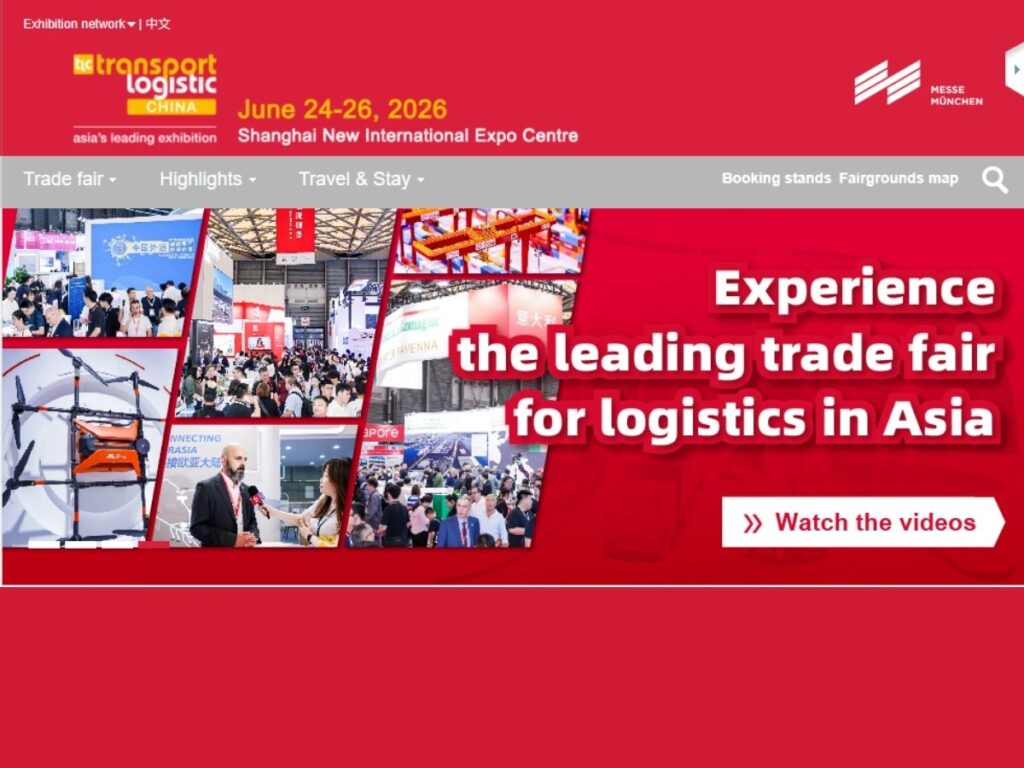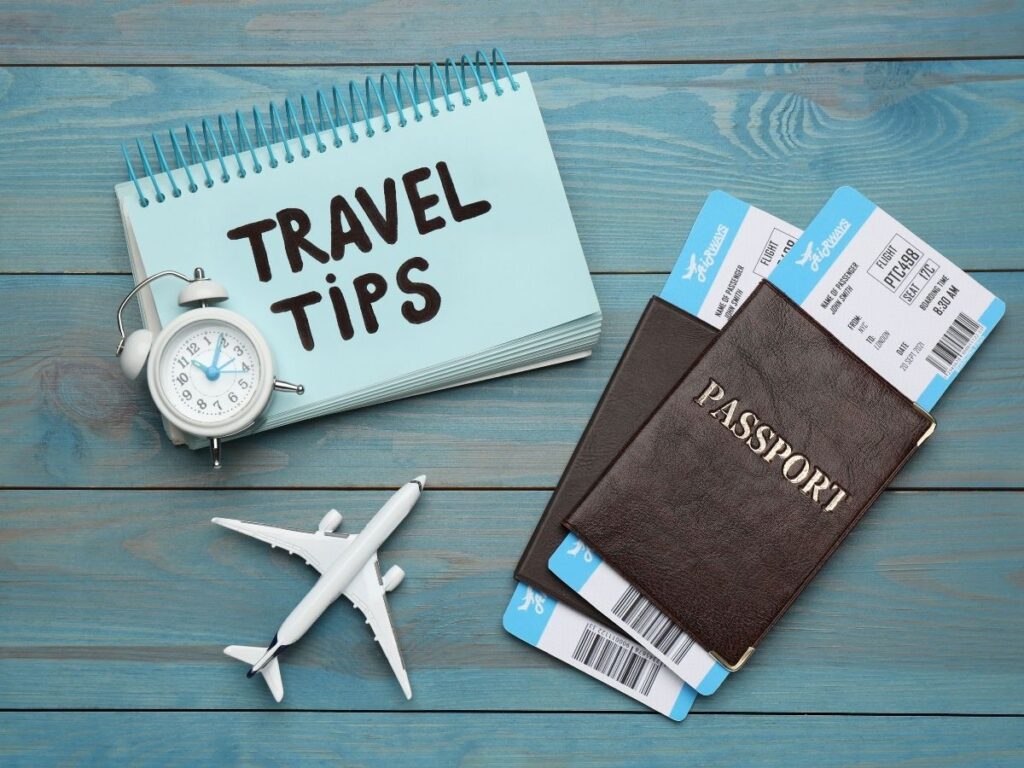The first time I attended Transport Logistic China, I went looking for warehouse tech—and walked out with two new international suppliers and a logistics automation deal. That trip changed the way I do business.
But it only happened because I planned every step.
This guide is for business leaders who want the same outcome. It’s built from personal experience and sharpened through helping clients across construction, logistics, manufacturing, and energy sectors do the same.
Inside, you’ll get everything you need: step-by-step registration, must-see zones, networking tips, and real advice for first-time attendees. By the end, you’ll have a clear path to turn a single visit into a real business win.
Ready to make it work for you?
Let’s get started!
1. Key Event Details
Before you even step foot in the venue, getting the basics right can save you time, money, and confusion. Here’s everything you need to know to plan your visit to Transport Logistic China 2026 with confidence.
Official Dates & Opening Hours
- Event Dates: June 24–26, 2026
- Opening Hours:
- June 24: 9:00 AM – 5:00 PM
- June 26: 9:00 AM – 3:00 PM (shortened last day)
Venue Details
- Venue Name: Shanghai New International Expo Centre (SNIEC)
- Address: No. 2345 Longyang Road, Pudong New District, Shanghai, China
- Halls Used: W1 to W5, E1 to E7, N1 to N5 (venue map available on site and app)
- Nearby Landmark: Opposite Century Park, near Longyang Road Metro Station
Official Website
- https://www.transportlogistic-china.com (Bookmark this site for updates, registration, exhibitor list, and travel support)
Entry Requirements
- Badges: Pre-registration required for badge with QR code (see registration section)
- Trade Only: Business visitors only—bring a business card and ID
- Language Support: Mandarin is primary, but English signage is widely available. Some booths offer interpreters.

2. Plan Your Visit Like a Pro
This event is massive. Thousands of booths. Multiple halls. Dozens of deals happening around you in real time. You can either walk in like a tourist, or you can walk in like a buyer who knows exactly what they’re here for.
I learned this the hard way.
The first time, I showed up with a printed exhibitor list and no real agenda. I was trying to find automation solutions for a mid-sized warehouse project. Three hours in, I had sore feet, a tote bag full of brochures, and zero actual conversations that moved the needle.
That doesn’t have to be you.
Get Clear on Your Goals
Before you step into the venue, ask yourself:
- Are you sourcing specific products or tech?
- Looking for new partners in Asia?
- Exploring innovation in logistics systems or last-mile delivery?
Build a Tactical Itinerary
Forget hour-by-hour agendas. You don’t need a packed schedule — you need a smart one. Try this:
- Block out each morning for high-priority booths and pre-set meetings.
- Use afternoons for walking targeted zones and discovering what’s new.
- Leave gaps for impromptu networking. Some of the best leads come from casual chats.
I usually schedule no more than 3 formal meetings a day. That leaves room for strategy, not just speed.
Use the Event App Like
Download the official app before the event. Don’t wait until you’re in the lobby. Here’s how I use it:
- Tag must-visit exhibitors based on industry zone.
- Save booth numbers and map routes by hall.
- Turn on push notifications for live updates.
- Schedule reminders for panel sessions or tech demos.
Treat the app like your assistant. It saves hours — literally.

3. Visitor Registration Process
Let’s make one thing clear, don’t wait to register.
If you want to walk in prepared (and not stuck in line while your competitors are already networking), you need to handle registration early and smart.
It’s not hard, but there are details you can’t afford to miss.
Step#1 Register Online
Head straight to the official site: https://www.transportlogistic-china.com
You’ll be asked for:
- Your full name and job title
- Company name and business category
- Contact details
- Your visiting goals (e.g., sourcing, networking, partnership)
You’ll get a confirmation email with a digital badge (QR code). That’s your golden ticket — no badge, no entry.
Step#2 Bring the Essentials with You
Even if you register online, don’t show up empty-handed. Here’s what you’ll need at the entrance:
- Your confirmation email with the QR code (digital or printed)
- A valid ID or passport
- At least one physical business card
Yes, they still check for business credentials. This is a trade event — not a public show.
Step#3 Group or Delegation Visits
Bringing a team or coming as part of a regional delegation?
You can request group registration support through the organizers. It helps streamline badge pickup and gives your team a shared meeting zone if needed.
Just email the organizing team via the contact page on the official site a few weeks in advance.
Step#4 Fees and Access Levels
- Entry to the main expo is free for verified trade visitors. Some side events (forums, matchmaking sessions) may require separate passes or early booking. Paid upgrades like VIP badges or lounge access are optional but useful if you’re short on time and want fast-track benefits.
Pro Tip: The free badge gets you everywhere you need to go for standard B2B meetings. Don’t overpay unless speed or privacy is essential.
4. Logistics & Travel Tips for Visitors
Getting to Transport Logistic China isn’t complicated — but if you don’t plan it right, it will cost you time, energy, and opportunities. Let’s make sure your travel doesn’t get in the way of your goals:
Flying Into Shanghai
Most international visitors will land at one of two airports:
- Pudong International Airport (PVG): Best for overseas flights. About 40–45 minutes to the venue by car.
- Hongqiao International Airport (SHA): Closer to downtown. Around 45–60 minutes to the venue by metro or taxi.
I’ve flown into both. PVG is more direct for international travelers, but SHA is smoother if you’re already in China.
Where to Stay
Book your hotel early. TLC pulls tens of thousands of visitors — the good business hotels fill up fast.
Best options:
- Near the venue (Pudong):
- Kerry Hotel Pudong
- Jumeirah Himalayas Hotel
- Dorsett Shanghai (These offer fast access + some have shuttle service)
- Downtown (if you want nightlife or meetings):
- Grand Kempinski Hotel
- Park Hyatt Shanghai
- Andaz Xintiandi
Balance proximity and purpose. I usually stay near the venue to save time, then commute into the city if I have side meetings.
Getting to the Venue
The event takes place at the Shanghai New International Expo Centre (SNIEC).
Metro (Fast + Reliable):
- Line 7 to Huamu Road Station, closest to Hall Entrance 2.
- Line 2 to Longyang Road Station ,a 10-minute walk.
Taxi or Car:
- Ride-hailing apps like DiDi (China’s Uber) work well.
- Print or show this to your driver: “上海新国际博览中心,龙阳路2345号”
Pro tip: Avoid morning rush hours (8–9:30 AM). Taxis get stuck — the metro wins every time.
On-Site Navigation
SNIEC is big. Really big.
- Use the official event app for live GPS guidance inside the venue.
- Each hall is industry-themed — plan routes by hall clusters (e.g., visit W1–W3 in one go).
- Signage is bilingual (Chinese/English) and easy to follow.
Meals, Payments & Connectivity
- Food: Plenty of café-style options inside SNIEC. For real meals, walk across the street to Kerry Parkside Mall (great international food court).
- Payments: Use WeChat Pay or Alipay. Most places don’t accept foreign credit cards. (Tip: Set up a travel wallet on WeChat before you land.)
- Wi-Fi: Available but often spotty. Download the venue map and app data before you arrive.
Translation Tools
Even though most signage is in English, many vendors still prefer Mandarin.
- Use apps like:
- iTranslate
- Pleco
- Google Translate (offline mode)
Personally, I’ve had great success just typing or showing screenshots — it keeps things moving quickly.

5. Major Exhibition Zones
Walking into Transport Logistic China without knowing which zone to target is like walking into a warehouse without labels—it’s overwhelming, and you’ll miss what you came for.
This isn’t a general trade show. The exhibition layout is strategic, segmented by industries, technologies, and logistics specializations. If you know where to go, you can find exactly what your business needs in a fraction of the time. Let’s break it down:
Freight Transport & Logistics Services
This is the heart of the show. It’s where global and Chinese logistics providers showcase their services across road, rail, sea, and air. What you’ll find here:
- Freight forwarding companies
- Multimodal transport solutions
- Regional distribution networks
- Supply chain integration providers
Ideal for:
- Businesses looking to expand import/export operations
- Those needing cross-border logistics partners
Smart Logistics & IT Systems
This zone focuses on digital transformation in logistics. If you’re looking to automate, track, or manage logistics through data—this is your zone. What you’ll see:
- Warehouse and transport management systems (WMS, TMS)
- Real-time tracking and AI-powered routing
- Blockchain and security platforms for cargo tracking
- IoT systems for fleet and warehouse monitoring
Ideal for:
- Companies upgrading operations or expanding into eCommerce logistics
- Tech-minded logistics managers seeking scalable solutions
Air Cargo China
A dedicated zone within the main show, Air Cargo China draws airlines, airport operators, ground handlers, and air freight forwarders from all over the world. Expect to see:
- End-to-end air freight solutions
- Specialized cargo (pharma, electronics, perishable goods)
- Innovations in cargo handling and security
Ideal for:
- High-value or time-sensitive product shippers
- Companies in the medical, electronics, and agri-export sectors
Infrastructure & Supply Chain Management
This area is built for businesses who want to understand the bigger picture of global logistics. It focuses on ports, terminals, real estate, and investment-heavy supply chain assets. Who’s here:
- Port and airport authorities
- Logistics park developers
- Industrial real estate providers
- Trade and investment zones
Ideal for:
- Strategic planners and business development teams
- Companies expanding internationally or relocating operations
Fresh Logistics Asia
Focused on temperature-sensitive logistics, this section is vital for companies dealing in food, pharma, and agriculture. Solutions you’ll see:
- Cold chain technologies
- Temperature monitoring and control systems
- Insulated packaging
- Refrigerated transport vehicles
Ideal for:
- Agri-exporters, food processors, pharma companies
- Retailers needing consistent cold chain compliance
Equipment & Logistics Vehicles
If your business depends on physical movement—whether that’s construction materials, manufacturing parts, or retail goods—this is where you’ll want to spend time. What’s featured:
- Forklifts, AGVs, cranes
- Container handling equipment
- Delivery vans, electric vehicles, heavy-duty trucks
- Material handling systems
Ideal for:
- Construction, mining, and industrial sectors
- Companies scaling up in-house logistics capacity
6. Networking & Matchmaking Opportunities
If you’re only walking the show floor, you’re leaving value on the table. Transport Logistic China isn’t just about booths—it’s about business conversations that lead to real outcomes.
The best ROI often comes from who you meet, not just what you see.
Pre-Book Meetings
The smartest visitors don’t wait until show day to make connections—they start before the event even begins. Use the official event platform or exhibitor portal to:
- Request 1-on-1 appointments with suppliers and service providers
- Filter exhibitors by product category or industry focus
- Lock in time slots before their schedules fill up
These meetings are typically held in private lounge areas or at the exhibitor’s booth. They’re more focused, more personal, and more likely to move the needle for your business.
Attend Industry Forums
TLC hosts multiple industry-specific forums and panel discussions across the three-day event. These aren’t fluff. They’re where sector leaders share strategies, trends, and procurement plans.
Examples of past themes:
- Green Logistics and Carbon-Neutral Supply Chains
- Digital Transformation in Freight
- Cold Chain Innovation for Food & Pharma
- Cross-Border eCommerce and Smart Fulfillment
Informal Networking
Some of your best conversations will happen off the show floor—at the café, the networking lounge, or even waiting in line for lunch.
Bring plenty of business cards.
Introduce yourself to the person standing next to you. Use WeChat—it’s how business is done in China.
I’ve turned a simple coffee-line chat into a shipping contract within six weeks. All it took was being open, prepared, and clear on what I was looking for.
7. 4 Tips for First-Time Attendees
First time attending Transport Logistic China? You’re not alone—and you’re not behind.
But let’s be real. This event is massive, and if you show up without a strategy, you’ll burn a full day wandering and leave with nothing but sore feet and a tote bag full of flyers.
Let’s change that.
#1 Expect to Be Overwhelmed
That’s normal.
The venue is huge, the signage is everywhere, and everyone around you seems to know exactly where they’re going.
I remember my first time—I walked into Hall W1 thinking I’d “explore a bit” and maybe figure it out as I went. Bad move. Three hours in, I hadn’t seen a single vendor that matched my business needs.
You need a plan. Even a simple one will put you ahead of 80% of first-timers.
#2 Stick to 1 or 2 Goals
Don’t try to do everything. Instead, pick 1 or 2 clear objectives, like:
- Find 2 new cold chain suppliers
- Compare automation tech for your warehouse
- Meet at least three freight providers from Southeast Asia
When you know what you’re looking for, the entire event gets easier to navigate—and more valuable.
#3 Avoid Rookie Mistakes
Here’s what to skip (trust me, I’ve done all of these):
- Don’t walk in blind. Use the app to map out which zones are relevant to your industry.
- Don’t overbook. Leave space between meetings. Everything takes longer than expected.
- Don’t ignore the small booths. Some of your best finds won’t be in the flashy displays.
- Don’t forget to follow up. That business card means nothing if you don’t send a message within 48 hours.
#4 Use the Help Desks
Transport Logistic China has support stations at major entry points, staffed with English-speaking reps. They’ll help you:
- Navigate to the right halls
- Understand the event app
- Find shuttle buses, rest zones, or meeting areas
Ask questions. That’s what they’re there for.
Conclusion
My first visit to Transport Logistic China was chaos. Yours won’t be.
Now you know what the event is, where it happens, how to register, what to see, and how to use every hour wisely. Whether you’re sourcing tech, scouting freight partners, or breaking into Asia’s supply chain — you’re ready.
Don’t wait. Start planning. This show moves fast, and so should you.
Need help planning your visit or bringing your team?
Contact us today, we’ve walked this path and can help you walk it smarter.


